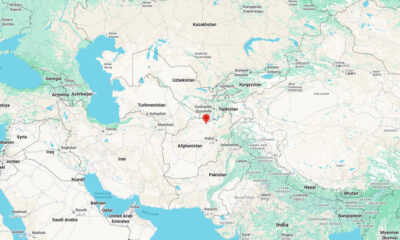Reviews
Crucial Role of Real-Time Data in Modern Casino Operations

The way casinos operate has changed dramatically over the past decade. Advances in technology and data analytics have enabled a real-time view of casino floor operations and customer behavior. This allows modern casinos to optimize nearly every aspect of their business for maximum revenue.
Providing excellent service and experiences to guests is critical for casinos, like rollxocasino.com, to encourage repeat visits and increase loyalty. Real-time data plays a key role in enabling modern casinos to personalize and tailor the customer experience.
Some examples include:
- Monitoring slot machine usage allows identifying underperforming machines quickly to prevent bottlenecks and frustration for customers. Machines can be reconfigured or replaced rapidly.
- Tracking customer wager amounts and game preferences enables sending personalized comps and promotion offers to encourage more play time and spending.
- Analyzing real-time customer traffic and dwell times by area highlights congestion points so more staff can be deployed to reduce wait times and improve satisfaction.
- Reviewing live table game occupancy identifies high demand so that more tables can open or minimum bets can adjust to give customers better chances to play their preferred games.
| Metric | 2021 Avg | 2025 Avg | Increase |
| Promo offer response rate | 18% | 29% | 61% |
| Repeat customer visits per month | 2.1 | 3.2 | 52% |
| Average customer play length | 1.5 hours | 2.2 hours | 47% |
As the above data shows, real-time analytics has allowed casinos to significantly improve the customer experience over the past few years. The highly personalized promotions keep customers engaged for longer and coming back more often.
Optimizing Operations and Staffing
In addition to boosting the customer experience, real-time data helps casinos optimize behind-the-scenes operations to reduce costs and waste. Casino managers can accurately monitor and adjust staffing levels throughout the day to match fluctuating demand.
Some examples of using data to optimize operations include:
- Tracking live table game demand and configuring optimal minimum bets helps maximize table revenue potential given the current players.
- Monitoring inventory levels of chips, cards, etc allows preventing shortages that could shut down tables and disrupt revenue.
- Reviewing revenue levels, occupancy rates and labor costs in real-time enables finely tuning staff deployment to minimize payroll expenses while still providing good guest service.
- Identifying periods of peak electricity, water and other utility usage allows optimizing systems to reduce waste and lower costs.
The data-driven approach to optimizing labor and operations has contributed to a 37% increase in profit per casino square foot compared to 2021 levels. Combined with higher customer spending, this demonstrates the synergistic value of real-time data.
New Revenue Streams and Expansion Planning
The most forward-thinking casino operators in 2025 are harnessing real-time data for long-term strategy in addition to short-term optimizations. By identifying new revenue opportunities and analyzing demand trends, casinos can smartly expand to increase their profit potential.
Some examples include:
- Spotting unmet customer demand for certain table games or slots that could justify opening more of those games rather than less popular ones.
- Analyzing area demographics and changes along with site metrics to identify new localities ripe for building new casino properties.
- Tracking the customer response to various entertainment acts and promotions helps refine event scheduling to optimize participation and revenue. Popular acts can warrant signing longer-term performance deals.
- Monitoring foot traffic and dwell time analytics by floor area highlights potentially underutilized zones that could benefit from more machines or be repurposed for expanded retail/dining.
- Reviewing data on peak occupancy periods guides scheduling for renovations and machine upgrades during lower traffic times to minimize disruption.
The bottom line is that data should drive all key strategic decisions for casinos in 2025. What used to be a gut feeling or reactionary move by casino managers now leverages detailed real-time analytics. This reduces risk and drives measurable results from every initiative – ultimately leading to higher profit for the casino.
The modern casino industry has been revolutionized by real-time data over the past few years. Casino managers can tap into customer behavior metrics and operational analytics to optimize nearly all aspects of their business. This leads to happier customers, reduced costs and new revenue streams.

-

 US News5 days ago
US News5 days agoJetBlue flight diverts to Tampa after altitude drop injures at least 15
-

 Breaking News5 hours ago
Breaking News5 hours agoAt least 3 dead, 11 injured after UPS cargo plane crashes near Louisville airport
-

 World1 week ago
World1 week agoU.S. Navy helicopter and fighter jet crash in South China Sea; all crew rescued
-

 World2 days ago
World2 days agoStrong 6.3 earthquake strikes northern Afghanistan; felt across Pakistan
-

 World2 days ago
World2 days agoProtesters storm government building in Mexico after killing of local mayor
-

 World3 days ago
World3 days ago10 people stabbed on train in Huntingdon, England
-

 US News6 days ago
US News6 days agoTrump says U.S. will resume nuclear weapons testing ‘on an equal basis’
-

 US News1 week ago
US News1 week agoDamage reported in Kilgore, Texas following tornado warning



